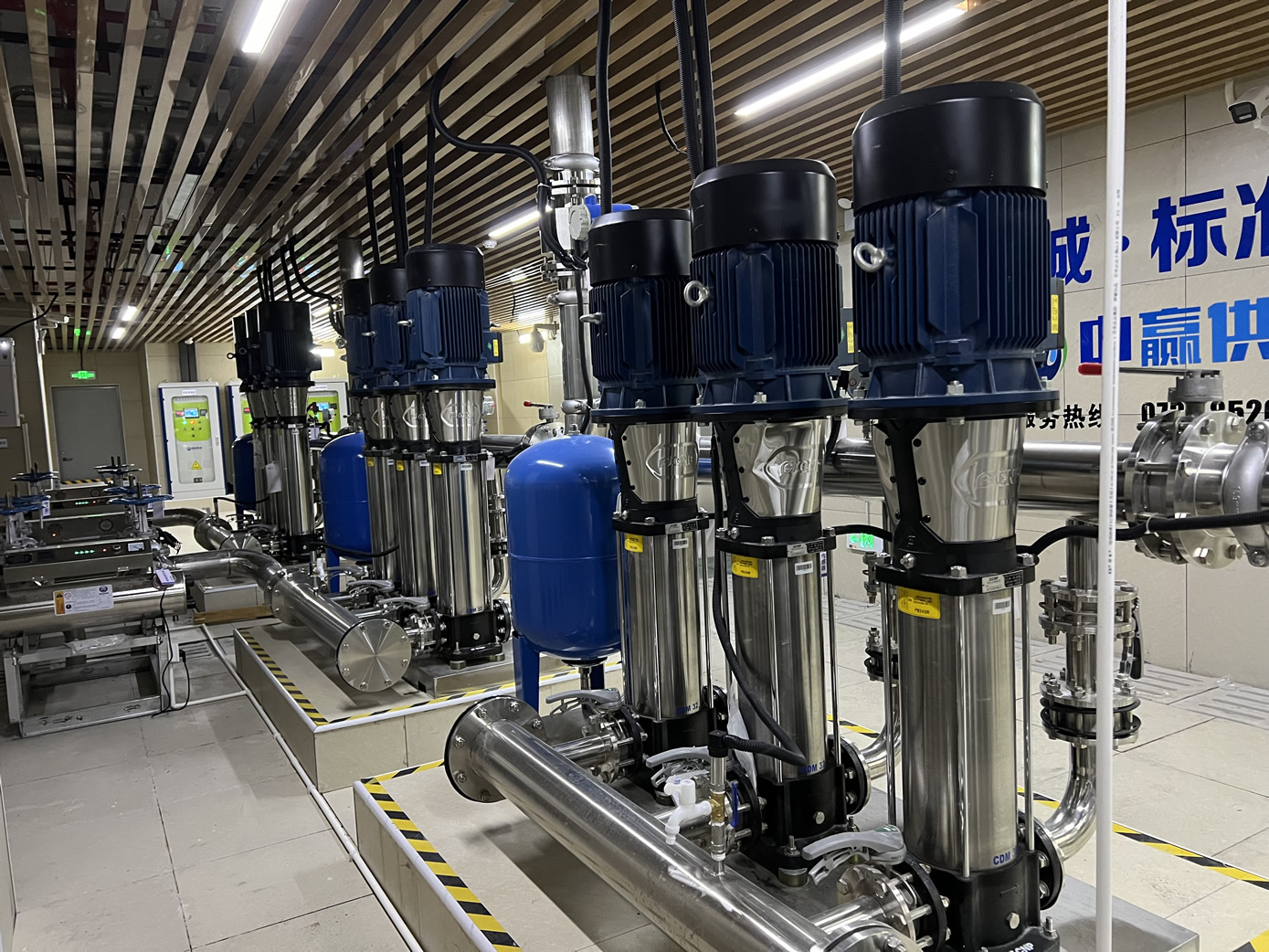The secondary boosting equipment for community water supply can flexibly adapt to the water supply conditions and provide customized solutions
With the acceleration of urbanization and the popularization of high-rise residential buildings, the secondary boosting equipment for water supply in residential areas is rapidly evolving towards intelligence, energy conservation, and high efficiency. The deep application of the Internet of Things, big data, and frequency conversion technology promotes the upgrading of equipment from traditional mechanical control to intelligent management systems, while the concept of energy conservation and environmental protection drives technological innovation, forming a multidimensional development pattern. In response to the renovation needs of old residential areas, modular assembly equipment has been introduced, which can flexibly adapt to different site conditions. We also provide customized solutions, such as hospital specific anti infection water supply systems and cold resistant equipment for high-altitude areas. The equipment will be included in the carbon footprint accounting system and enhance market competitiveness through energy efficiency labeling and green product certification. The development of secondary water supply boosting equipment is moving from a single function to a multidimensional goal of "intelligence, energy conservation, safety, and low-carbon". In the future, with the deepening of the dual carbon policy and the promotion of new urbanization, equipment will pay more attention to optimizing the full life cycle cost, promoting the transformation of urban water supply systems towards intelligence and sustainability.

Characteristics of secondary boosting equipment for community water supply
Intelligent perception and remote monitoring: The device integrates pressure sensors, liquid level gauges, and water quality monitoring modules to collect real-time operational data and upload it to the cloud platform through the Internet of Things. Management personnel can remotely monitor parameters such as water pressure, flow rate, and energy consumption through mobile phones or computers to achieve fault warning and precise maintenance.
Adaptive regulation and AI optimization: Using PID variable frequency control and machine learning algorithms, the equipment can dynamically adjust the pump speed according to the user's water consumption, maintaining constant pressure water supply while reducing energy consumption. For example, a certain brand of equipment can predict peak hours in advance and automatically switch operating modes by analyzing historical water usage data, achieving an energy-saving rate of 15% -60%.
Unmanned operation and fault self-healing: equipped with automatic reset, fault pump shielding and other functions. When an abnormality is detected, the system automatically switches to the backup pump and sends an alarm message. Some high-end devices are equipped with edge computing technology, which can independently diagnose the cause of the fault and try to repair it remotely to reduce manual intervention.
Efficient frequency conversion and energy recovery: The new generation of frequency conversion constant voltage equipment adopts rare earth permanent magnet synchronous motors, combined with vector control technology, to improve motor efficiency to over 95%. Some devices also introduce energy recovery devices to convert excess pressure generated during the water supply process into electrical energy and feed it back to the grid.
Popularization of Non Negative Pressure Water Supply Technology: Through negative pressure suppressors and steady flow compensators, the equipment directly draws water from the municipal pipeline network, avoiding water pollution and energy waste caused by traditional water tank storage. Compared to the water tank supply mode, the non negative pressure equipment saves 30% -50% energy and reduces the footprint by 60%.
Hydraulic model optimization design: With the integration of simulation and three-dimensional hydraulic structure design, optimize the pump body flow channel and impeller shape, and reduce water flow resistance. For example, a certain enterprise designed impellers through bionics, which improved the efficiency of water pumps by 8% -12%.
Fully enclosed system and material upgrade: The equipment is coated with stainless steel or food grade epoxy resin to avoid corrosion and water pollution. The non negative pressure equipment is designed with a fully enclosed pipeline to reduce the risk of secondary pollution and comply with the requirements of the "Sanitary Standards for Drinking Water".
Intelligent disinfection and water purification: Integrated with ultraviolet disinfection and activated carbon filtration modules, real-time monitoring of residual chlorine content and automatic adjustment of dosage. Some devices are equipped with water quality warning systems, which immediately activate emergency response procedures when turbidity and heavy metal levels exceed the standard.
Low carbon design and circular economy: The equipment casing is made of recyclable aluminum, and the internal components are made of low-power chips, reducing carbon emissions throughout the entire lifecycle. Some manufacturers have launched old equipment recycling programs to achieve resource reuse through renovation and renovation.
- Pre:The practical application of v 2025/11/11
- Next:Changsha Zhongying Water Suppl 2025/11/11


